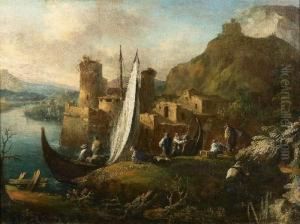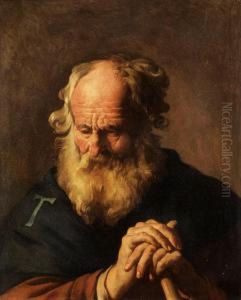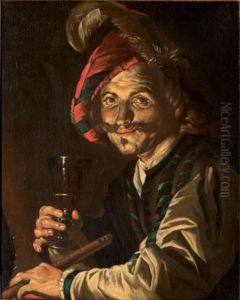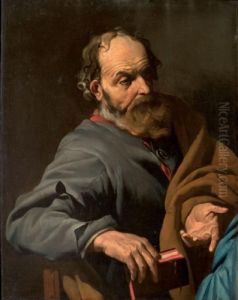Mathaus I Stomer Paintings
Matthias Stom, also known as Matthias Stomer or Mathaus I Stomer, was a Dutch painter credited with being one of the prominent representatives of the Utrecht Caravaggism movement during the early 17th century. Born in Amersfoort in the Netherlands around 1600, Stom's early life and training are somewhat shrouded in mystery, although it is believed he may have been a student of Gerrit van Honthorst, a notable Dutch Caravaggisti. Unlike many of his contemporaries, Stom spent a significant portion of his career outside the Netherlands, traveling and working in Italy, and later in Malta, which played a crucial role in the development of his distinctive style.
Stom’s work is characterized by its intense use of chiaroscuro, a technique he adopted from Caravaggio, employing strong contrasts between light and dark to create dramatic intensity in his paintings. This style was particularly well-suited to his often religious subjects, imbuing them with a deeply emotional and intimate atmosphere. Stom was adept at capturing the human condition, utilizing everyday realism combined with a profound sense of spirituality. His paintings often feature scenes from the Bible, showcasing his skill in portraying human emotion and divine themes with equal conviction.
While in Italy, Stom’s work gained appreciation for its originality and emotional depth. He worked in Rome, Naples, and Sicily, where his paintings were sought after by patrons who were attracted to the Caravaggisti style. His ability to adapt and integrate the Italian influence into his work, while maintaining a distinct personal style, set him apart from his peers. After Italy, Stom moved to Malta, where he continued to work until his death in 1652. During his time in Malta, he produced some of his most memorable works, which significantly impacted the local art scene.
Despite his success during his lifetime, Matthias Stom’s work was somewhat overlooked in the centuries following his death. However, recent scholarship and exhibitions have begun to re-evaluate his contribution to the Baroque period, recognizing him as a significant figure in the spread of Caravaggism across Europe. Today, Stom is celebrated for his mastery of light and shadow, his expressive portrayals of biblical narratives, and his role in the international Caravaggisti movement. His paintings can be found in major museums around the world, testament to his enduring appeal and the timeless quality of his art.



